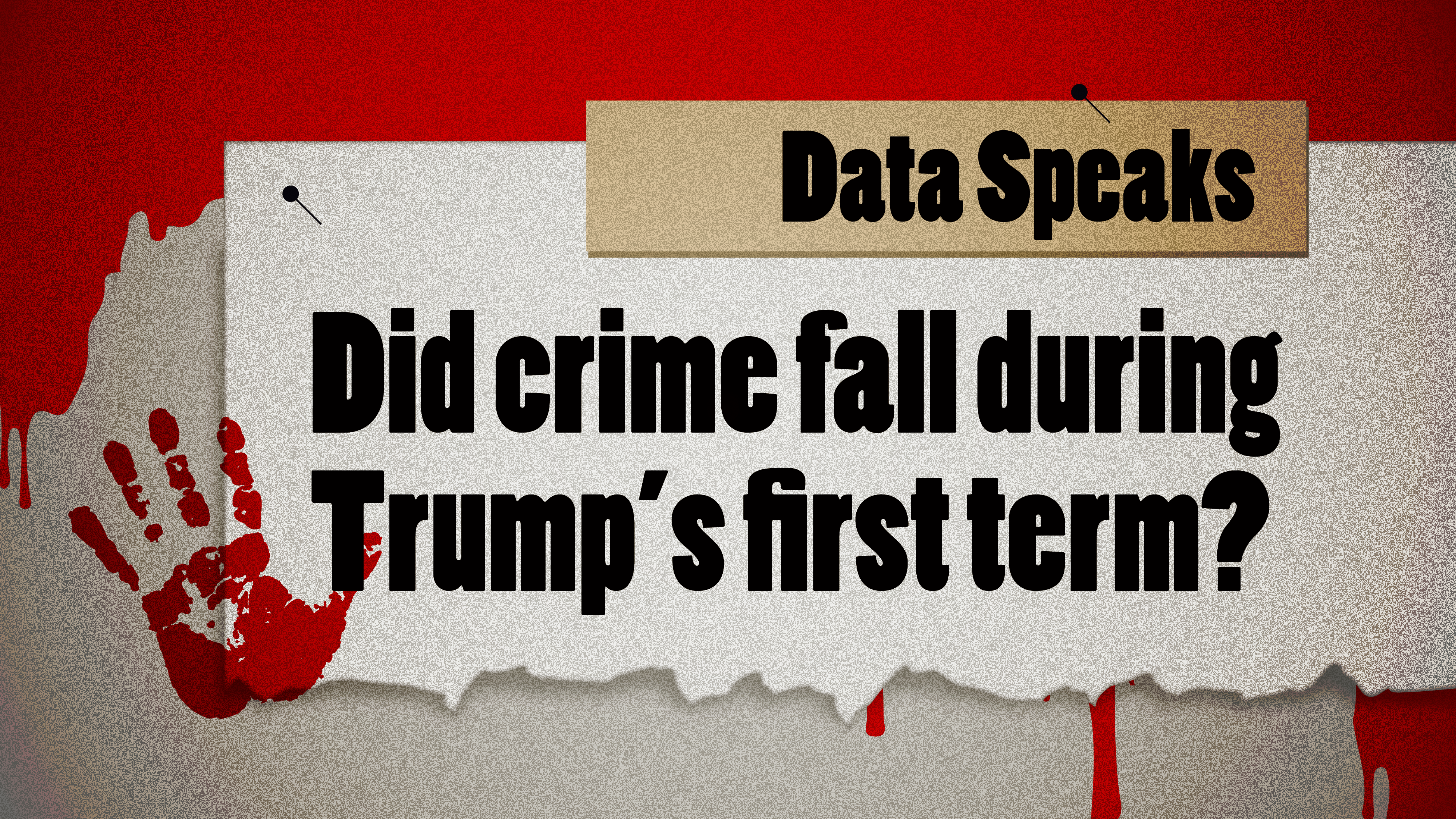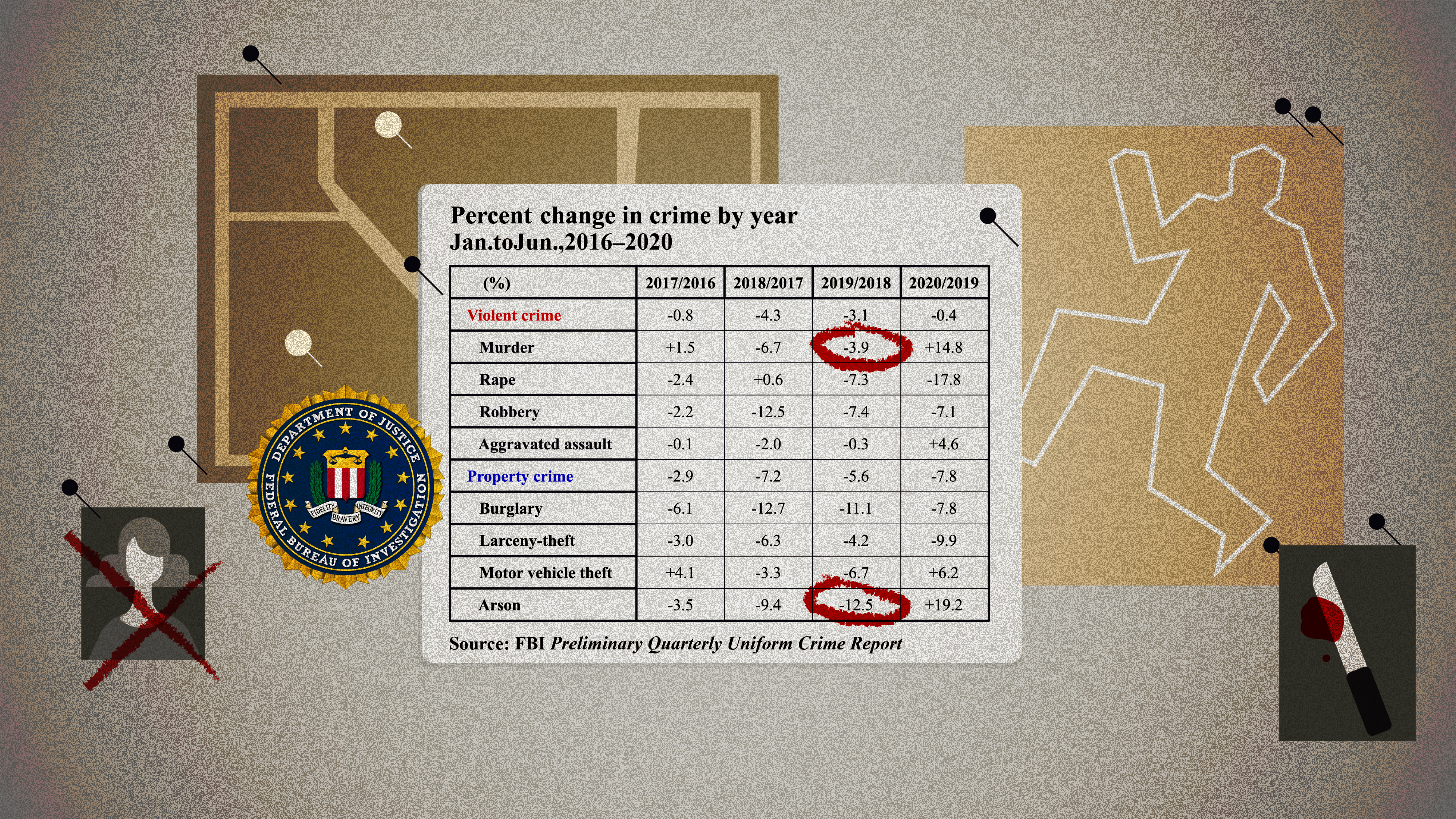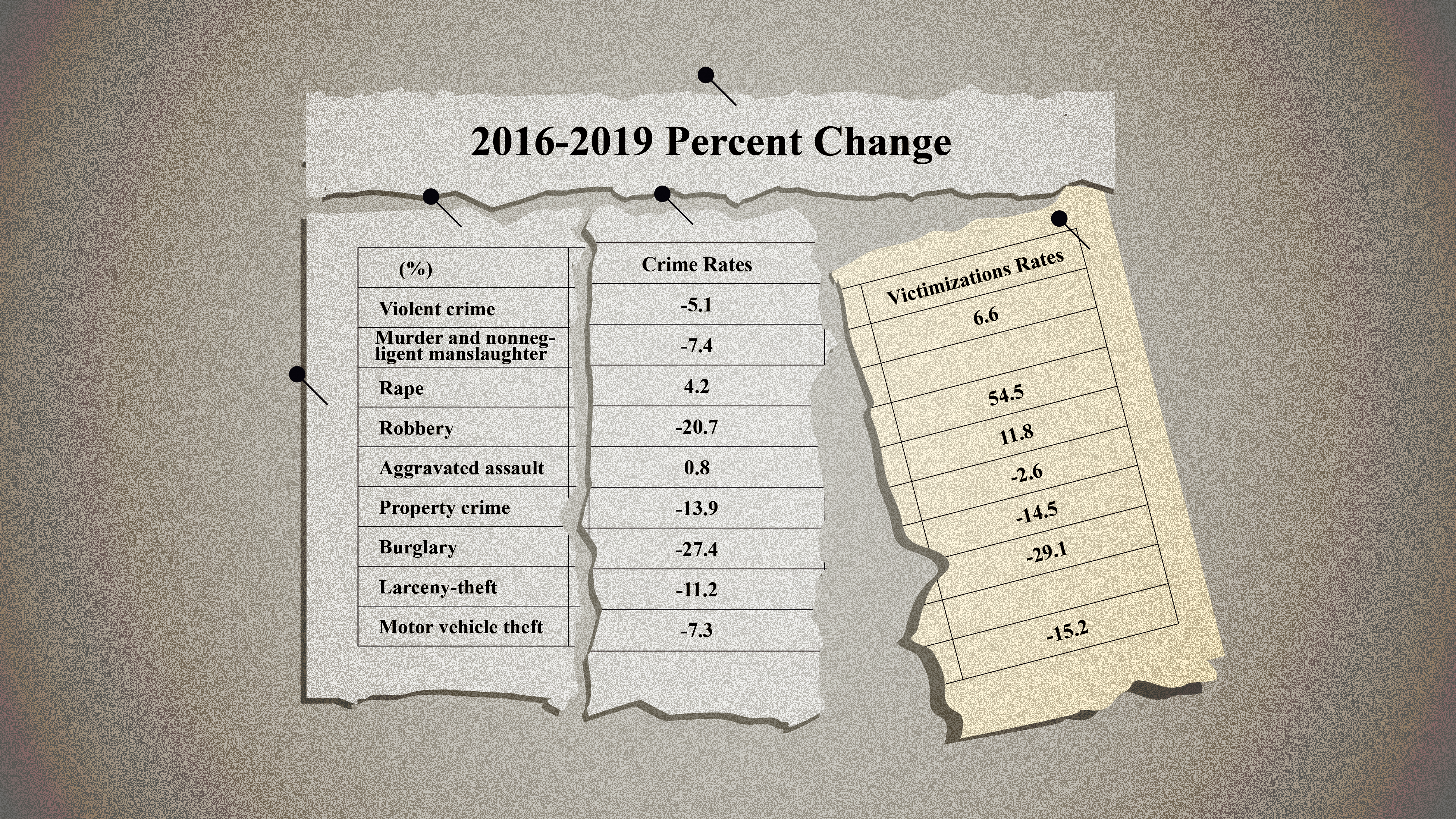04:07

Editor's note: All eyes are on the U.S. as the presidential election draws near. Who has actually benefited from Donald Trump's trade polices? Did the U.S. become safer during his term in office? Who is winning on the Twitter battlefield for the White House? Data Speaks dedicates three episodes on these matters. The second episode is on the U.S.' crime rate.
President Donald Trump claims crime is rising in Democrat-run cities, and challenger Joe Biden points to a surge in murders under the Republican's watch.
So what actually happened to crime rates in the U.S. during Trump's first term?
It's apparent that social unrest in the pandemic may have increased the rates of serious crimes, regardless of either political party's impact.
From January to June 2020, the murder total in the U.S. soared by 14.8 percent compared to the same period last year, and reported arson cases increased by 19.2 percent. Just a year earlier, those figures were falling: down by 3.9 percent and 12.5 percent respectively, according to a Federal Bureau of Investigation (FBI) report.

The situation in cities of one million people or more was particularly severe in the period, with murders up 22.7 percent and arson cases up by 52.1 percent. But a big city in the U.S. is more likely to be run by a Democrat whatever the crime rate is.
The story behind the crime rates, often a central focus of campaigns, is filled with uncertainties.
Have declines in some offenses resulted from lockdowns and social distancing, or have police prioritized other areas? Homicides commonly rise in the summer, but would they return to the historical track after a summer coinciding with the pandemic?
These uncertainties prevent us from assessing Trump's first term with clarity, especially when the U.S. crime statistics before the pandemic were inconsistent.
Crime reports from the FBI, one of the two major sources, showed declines both in violent and property crime rates between 2016 and 2019, the percentage changes of which were – 5.1 percent and – 13.9 percent separately.
But the other major source, the National Crime Victimization Survey conducted by U.S. Bureau of Justice Statistics, depicted a different picture on violent crime. From 2016 to 2019, the rate of victimization increased by 6.6 percent, from 19.7 to 21.0 victimizations per 1,000 persons aged 12 or older.

For robbery rates, the FBI reported a decline of 20.7 percent, but victimization rates increased by 11.8 percent, according to the National Crime Victimization Survey.
The paradox indicates a possible trend that crimes have been underreported.
So it's not easy to say, under the Trump administration, whether personal safety has been better or worse in the United States. The only common conclusion drawn from the different pieces of data is that, before the pandemic, property crime lessened, but cases of rape rose.
Why did the rape case rate surge? The MeToo movement in 2017 may have encouraged more victims to report cases to the police.

However, the police failed to adapt to the increase in cases. The percentage of rape cases cleared by arrest or exceptional means dropped from 36.5 percent in 2016 to 32.9 percent in 2019. During that span, the ratio of police officers to population in the U.S. hit the lowest point in more than 30 years.
One rape occurred every 3.8 minutes, about the length of this video you have watched, in 2019 in the United States.
In general, it cannot be concluded that U.S. society was getting safer before the pandemic, but the nation now clearly faces a more violent and dangerous situation.
More: Who were the winners from Trump's trade policies?
(If you want to contribute and have specific expertise, please contact us at opinions@cgtn.com.)